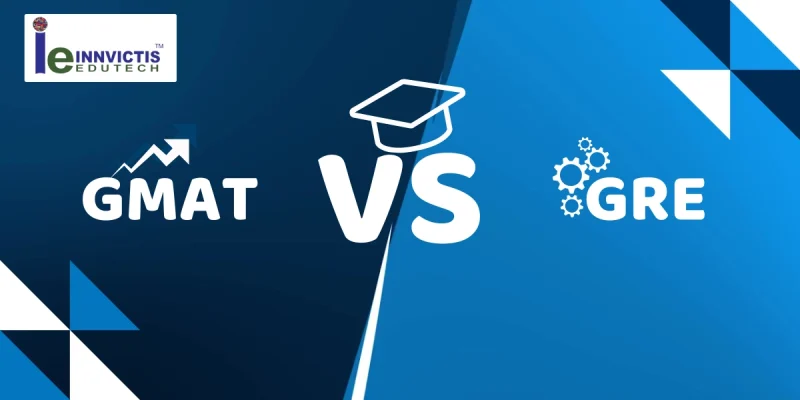Studying abroad opens the door to world-class education, cultural exposure, and personal growth. However, while the experience is rewarding, it often comes with a significant financial burden. To make their global education dreams a reality, most students look for ways to fund their studies through education loans or scholarships.
Both options can ease financial stress, but they work in very different ways. Understanding the key differences, advantages, and limitations of each can help you make the right financial decision for your academic journey. In this blog, we’ll break down education loans vs scholarships and help you decide which option best suits your goals and situation.
What is an Education Loan?
An Education loan is a type of financial assistance designed to help students cover the costs of studying, particularly abroad. This includes tuition fees, accommodation, and other living expenses. Unlike scholarships, which are essentially free money, education loans need to be paid back, usually with interest, after you graduate or complete your studies. Education loans make it possible for students to pursue their academic dreams without worrying about paying the full amount upfront. While they come with a repayment responsibility, they can be a valuable tool for making higher education more accessible and manageable.
Types of Education Loans
1. Federal Student Loans
Federal student loans are provided by the government and are designed to help students finance their education. They include:
a) Direct Subsidized Loans
- Available to undergraduate students who demonstrate financial need.
- The government pays the interest while the student is in school or during approved deferment periods.
b) Direct Unsubsidized Loans
- Available to both undergraduate and graduate students, regardless of financial need.
- Interest starts accruing as soon as the loan is disbursed, and the borrower is responsible for paying it.
2. Private Student Loans
- Offered by private banks or financial institutions.
- Can cover expenses not fully funded by federal loans or scholarships.
- Interest rates and repayment terms vary based on the lender and the borrower’s credit profile.
Some lenders also provide an education loan without collateral, depending on eligibility.
Pros and Cons of Education Loans
Education loans provide financial support to help students cover tuition and living expenses, which are usually paid back with interest after graduation.
Pros:
- Accessible to more students: Unlike scholarships, which are competitive and based on specific achievements, student loans for international students are available to anyone pursuing higher education.
- Covers larger amounts: Scholarships often provide only partial funding, leaving gaps in your finances. Student loans, however, can cover tuition, books, travel, and living expenses, offering complete financial support.
- Not based on merit: Scholarships usually require strong academic or extracurricular performance, which not every student may have. Loans, on the other hand, provide support regardless of grades or achievements.
- Flexible repayment options: Student loans allow repayment after you finish your studies. Many lenders offer grace periods, giving you time to settle into a job before starting repayment.
Cons:
- Interest accrues immediately: Especially with unsubsidized loans, interest starts accumulating from the time the loan is disbursed.
- Potential long-term debt: Student loans can create significant financial obligations, sometimes taking years or decades to repay.
- Reduced financial flexibility: Monthly repayments can limit your ability to save, invest, or make major life decisions after graduation.
What Are Scholarships for International Students?
Scholarships for international students are financial awards that help cover educational costs. Unlike loans, scholarships do not require repayment, making them an attractive option. They are typically awarded based on academic merit, financial need, or talent.
Types of Scholarships for International Students
There are different kinds of scholarships that help students study abroad. Each one has its own purpose and requirements. Here are some of the most common types:
1. Merit-Based Scholarships
These scholarships are for students who do really well in academics or have special talents in areas like sports, arts, or research. Good grades, leadership skills, and achievements outside the classroom can help you qualify.
2. Need-Based Scholarships
Offered to students who need financial help to continue their education. They’re usually based on your family’s income or financial situation.
3. Government Scholarships
Sponsored by governments to attract international students (e.g., Fulbright, Chevening, DAAD).
4. University-Specific Scholarships
Some universities provide their own scholarships to attract bright students from different countries. These can cover part or all of your tuition fees.
Key Differences: Education Loan vs Scholarship
| Feature | Education Loan | Scholarship |
|---|---|---|
| Repayment | Must be settled after graduation. | No repayment required |
| Eligibility | Based on financial status, credit, or enrollment | Based on merit, talent, need, or specific criteria |
| Amount Covered | Can cover full expenses including living costs | Often partial, sometimes full tuition only |
| Financial Risk | Carries debt and repayment obligation | No financial risk for the student |
| Purpose | To fund studies through repayable financial support | Provides financial support to students without the need to pay it back. |
Which One is Right for You?
Choosing between an education loan and a scholarship depends on your financial needs, eligibility, and academic profile:
- Scholarship: Best if you want a debt-free education and meet the eligibility criteria. It’s ideal for students with strong academics, talents, or financial need.
- Education Loan: Suitable if you need larger funds to cover tuition, living expenses, or study abroad costs and can manage repayment after graduation.
- Consider a hybrid approach: Sometimes combining a scholarship with a smaller loan can reduce debt while covering all expenses.
Can You Use Both Together?
Yes! You can use both. Many students combine scholarships and loans:
- A scholarship can reduce tuition costs.
- A loan can cover remaining expenses such as accommodation, books, or travel.
- This approach minimizes debt while ensuring you have enough funds to pursue your education comfortably.
Guide to Securing a Scholarship for Studying Abroad
Securing a scholarship for studying abroad takes planning and preparation:
- Research early and shortlist opportunities.
- Focus on eligibility criteria (merit, financial need, or nationality).
- Prepare strong applications, essays, and recommendation
- letters.
- Apply to multiple programs, including scholarships for Indian students if you qualify.
Don’t overlook smaller financial assistance scholarships that can help with living expenses.
How Innvictis Edutech Can Help
Navigating scholarships and education loans can feel overwhelming, but Innvictis Edutech simplifies the process for students. Here’s how we can help:
- Loan Assistance: Guidance on choosing the right bank or institution, understanding terms, and securing loans with better repayment options.
- Scholarship Guidance: Help in identifying scholarships you qualify for, preparing applications, and improving your chances of approval.
- Hybrid Planning: Personalized advice on combining loans and scholarships effectively to reduce financial stress.
- End-to-End Support: From documentation to follow-ups, Innvictis Edutech ensures you focus on your studies while they handle the paperwork and processes.
Conclusion
Both student loans for studying abroad and international studies scholarships open doors to global opportunities. Loans provide complete coverage but require repayment, while scholarships offer debt-free education but with competitive eligibility. The right choice depends on your profile, finances, and goals. With support from Innvictis Edutech, you can confidently secure education loans for abroad studies and scholarships to achieve your dream of studying overseas.














